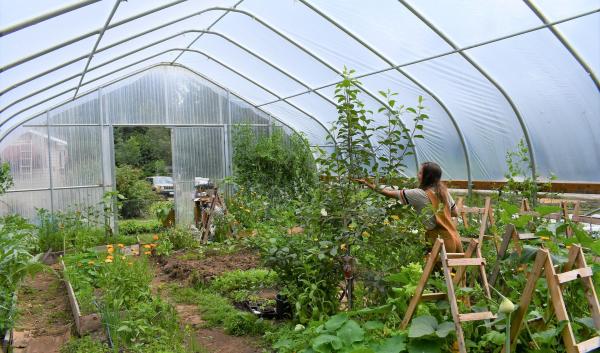Crops Topics from the Northwest Hub Region
-
Drought and Northwest Agriculture in a Changing Climate

Climate change could cause agricultural droughts to become longer and more severe in Idaho, Oregon, and Washington.
-
Agroforestry: Adapting to Climate Change in Northwest Agriculture

The integration of trees and shrubs into agriculture can increase the adaptability of farms to climate change.
-
No-till wheat farming in The Dalles, Oregon

No till farming helps farmers adapt to extreme weather events and support fish populations in The Dalles, Oregon.
-
Food Security and Climate Change in Alaska

Climate change is likely to affect agriculture, mariculture, and wild harvest foods in Alaska, which could impact the state’s food security.
-
Agrivoltaics: Pairing Solar Power and Agriculture in the Northwest

Agrivoltaics – the pairing of solar power generation with agriculture – could improve climate adaptability in the Northwest.
-
Climate-Resilient Hazelnuts in Oregon and Washington

Hazelnuts are a climate-resilient crop that could expand Oregon’s market for food, livestock feed, and bioenergy.
-
Northwest Pollinators and Climate Change

A summary of Northwest pollinators and their vulnerability to climate change.
-
Northwest Cover Crops for Climate Resilience

Cover crops can make farms more resilient to the impacts of climate change by enhancing soil health and water quality.
-
Northwest No-Till Farming for Climate Resilience

No-till farming keeps crop residues on farmland, protects soil, and limits the release of greenhouse gases.
-
Seaweed Farming in Alaska

Seaweed farming is emerging as a climate-smart maricultural practice that could thrive in Alaska’s nutrient rich waters.
-
Exploring Western Perennial Crop Cultivation in a Changing Climate

New tool models site suitability for five, high-value crops under climate change by considering temperature, crop development timing, and future irrigation needs.
-
Dry Farming Techniques in the Maritime Pacific Northwest

Dry farming is a technique for some producers to adapt and diversify operations in response to changes in water availability.

